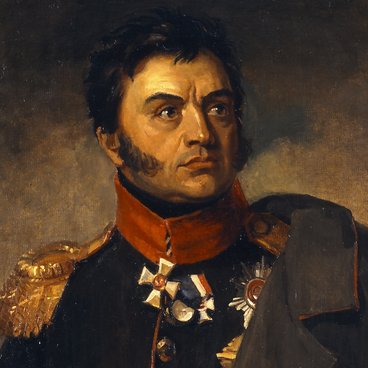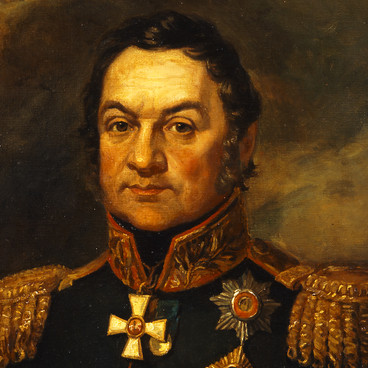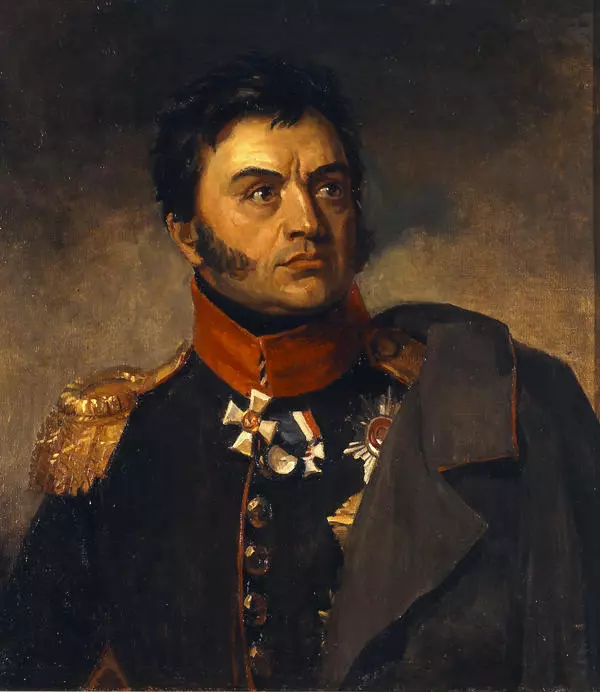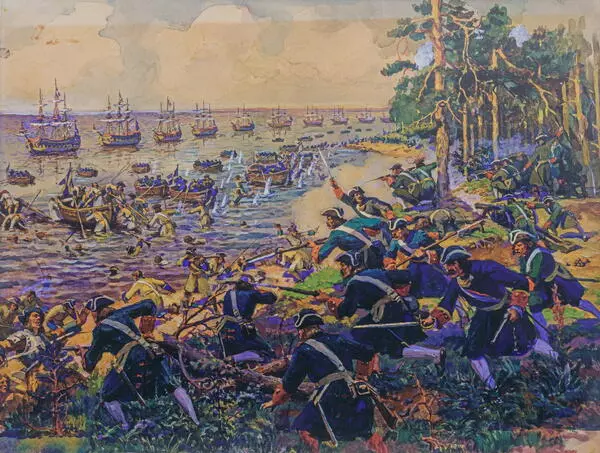Alexey Yermolov was born in 1777 into a noble family from the Oryol Governorate. He was brought up at the Noble Boarding School of the Moscow University. Since it was customary to send boys to military service early, at the age of 10 Alexey already had a low rank in the Life Guards Preobrazhensky Regiment.
In 1794, Yermolov participated in the Polish campaign. For the Warsaw assault he was awarded the Order of Saint George of the 4th grade — he was 17 years old. After participating in the Persian campaign of 1796-1797, Yermolov became a lieutenant colonel but soon was arrested on charges of conspiracy against Paul I. After a military trial, the young man was exiled to Kostroma; he remained in disgrace until the death of the emperor.
In the reign of Alexander I, Yermolov returned to military service. In the 1805-1807 wars with France, he commanded horse artillery companies, distinguished himself in the Battles of Dürenstein and Austerlitz. At the battle of Preussisch-Eylau in 1807, Yermolov’s actions determined the outcome of the combat: having opened fire from cannons on his own initiative, he foiled the French turning movement and saved the Russian army. In 1808 he became a major general.
On June 30, 1812, Yermolov was appointed Chief of the General Staff of the 1st Western Army. He participated in the battles of Vitebsk, Smolensk and Valutino, for merit in the latter was promoted to lieutenant general.
At a critical moment in the battle of Borodino on August 26, the general personally led a counterattack on the Kurgan, or Raevsky redoubt, captured by the enemy. He was injured in this attack. For the distinguished conduct in the battle of Borodino, Yermolov was awarded the Order of Saint Anne of the 1st grade.
At the council at Fili, the general was among those who insisted on a battle near Moscow. At the final stage of the war, Yermolov participated in the Battles of Tarutino and Maloyaroslavets, as well as in the Battles of Vyazma and Krasny. In December 1812, he headed the entire artillery of the Russian army.
In 1813-1815 Yermolov took part in the European campaigns. In the battle of Kulm, he again made a decisive move: prevented the rout of the allied army, which was retreating after the unsuccessful battle. For the distinguished conduct in this battle, the general received the Order of Saint Alexander Nevsky.
In the 1820s, the English artist George Dawe painted a portrait of Alexey Yermolov for the Military Gallery of the Winter Palace. The gallery was dedicated to heroes of the 1812 Patriotic War. To emphasize the commander’s characterful profile, the artist depicted him from an angle that differed from the rest of the portraits, hence the commander’s numerous awards are not visible. The Museum-Panorama “Battle of Borodino” holds a copy of General Yermolov’s portrait, painted in 1970.
In 1794, Yermolov participated in the Polish campaign. For the Warsaw assault he was awarded the Order of Saint George of the 4th grade — he was 17 years old. After participating in the Persian campaign of 1796-1797, Yermolov became a lieutenant colonel but soon was arrested on charges of conspiracy against Paul I. After a military trial, the young man was exiled to Kostroma; he remained in disgrace until the death of the emperor.
In the reign of Alexander I, Yermolov returned to military service. In the 1805-1807 wars with France, he commanded horse artillery companies, distinguished himself in the Battles of Dürenstein and Austerlitz. At the battle of Preussisch-Eylau in 1807, Yermolov’s actions determined the outcome of the combat: having opened fire from cannons on his own initiative, he foiled the French turning movement and saved the Russian army. In 1808 he became a major general.
On June 30, 1812, Yermolov was appointed Chief of the General Staff of the 1st Western Army. He participated in the battles of Vitebsk, Smolensk and Valutino, for merit in the latter was promoted to lieutenant general.
At a critical moment in the battle of Borodino on August 26, the general personally led a counterattack on the Kurgan, or Raevsky redoubt, captured by the enemy. He was injured in this attack. For the distinguished conduct in the battle of Borodino, Yermolov was awarded the Order of Saint Anne of the 1st grade.
At the council at Fili, the general was among those who insisted on a battle near Moscow. At the final stage of the war, Yermolov participated in the Battles of Tarutino and Maloyaroslavets, as well as in the Battles of Vyazma and Krasny. In December 1812, he headed the entire artillery of the Russian army.
In 1813-1815 Yermolov took part in the European campaigns. In the battle of Kulm, he again made a decisive move: prevented the rout of the allied army, which was retreating after the unsuccessful battle. For the distinguished conduct in this battle, the general received the Order of Saint Alexander Nevsky.
In the 1820s, the English artist George Dawe painted a portrait of Alexey Yermolov for the Military Gallery of the Winter Palace. The gallery was dedicated to heroes of the 1812 Patriotic War. To emphasize the commander’s characterful profile, the artist depicted him from an angle that differed from the rest of the portraits, hence the commander’s numerous awards are not visible. The Museum-Panorama “Battle of Borodino” holds a copy of General Yermolov’s portrait, painted in 1970.









